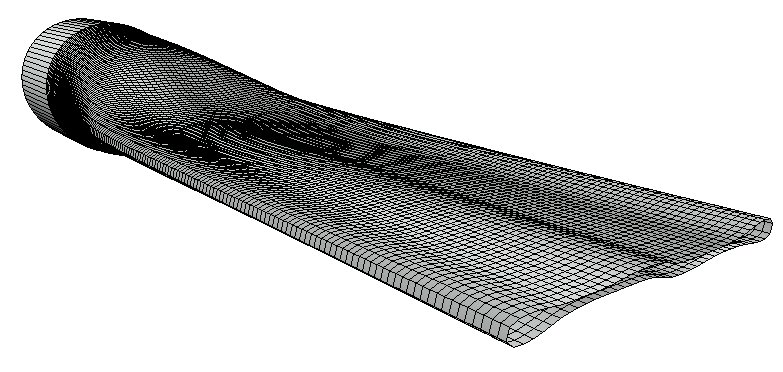An underwater explosion is an obvious potential threat to a nearby submarine as consequent strong shock waves
can lead to the structural failure of the submarine hull.
However, explosions are not the only sources of such shock waves. In particular, the implosion of an air-backed volume
external but close to a submarine hull can have similar effects. With the number of these volumes expected to increase,
implosion has become a concern to the NAVY who now requires an improved capability to design and qualify
submarine external payloads for implosion avoidance and platform survivability.
In order to model the implosion of underwater air-filled structures and their effects,
the structural and flow physics need to be properly accounted for. The structure of a so-called
implodable volume undergoes large and violent displacements potentially leading to self-contact and cracking, while
strong acoustic waves are propagated in both fluids which can come into contact once cracking
occurs. The computational framework being currently developed considers
the extended finite element method to model the structure and its cracking, and
a finite volume method to model all fluids. In particular, this finite volume method
incorporates a level set to locate the different compressible fluids and a local
one-dimensional two-phase Riemann solver to accurately compute fluxes at the interface between two fluids.
In order to properly model their complex interaction, the fluids and the structures
are integrated simultaneously by a staggered loosely-coupled scheme.
|
One of its main advantages comes from the possible use
of already-existing state-of-the-art integration schemes adapted to each field.
In addition, depending on the deformations and possible cracking of the structure,
either an Arbitrary Lagrangian-Eulerian (ALE) framework or a purely Eulerian framework can be chosen.
In the ALE framework, a body-fitted fluid mesh is updated during the simulation according to the motion
of the structure at the fluid-structure boundary, while in the purely Eulerian framework, the structure mesh
is embedded in a fixed non-body conforming fluid mesh. The former framework has already been successfully
used in a variety of fluid-structure interaction problems but cannot always handle the deformations
encountered in the present type of problems. Currently, the emphasis is put on the development of the purely Eulerian framework.
Preliminary numerical results have shown good agreement with corresponding experiments.
Results of a mode-2 collapse of an underwater aluminum cylinder compare pressure time-histories in the water
and the final shape of the structure as shown in figure 2.
 |
 |
| Figure 2: Experimental and computational results of the flattening of an underwater air-filled cylinder. |
|

